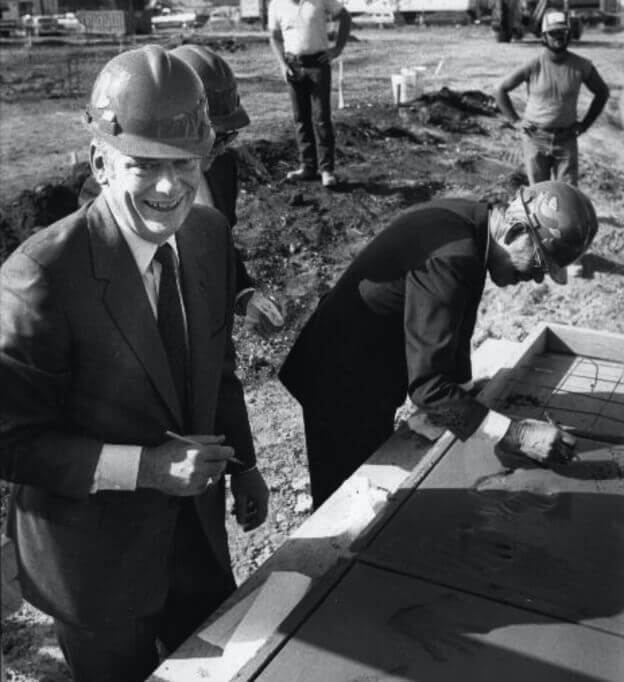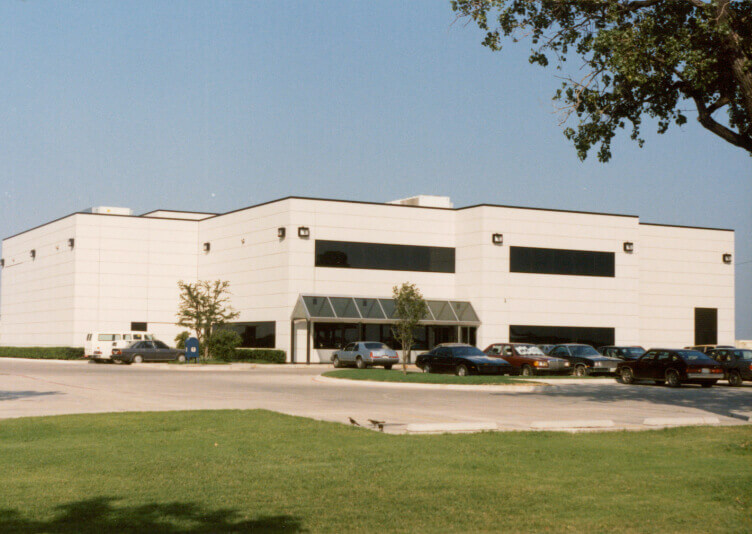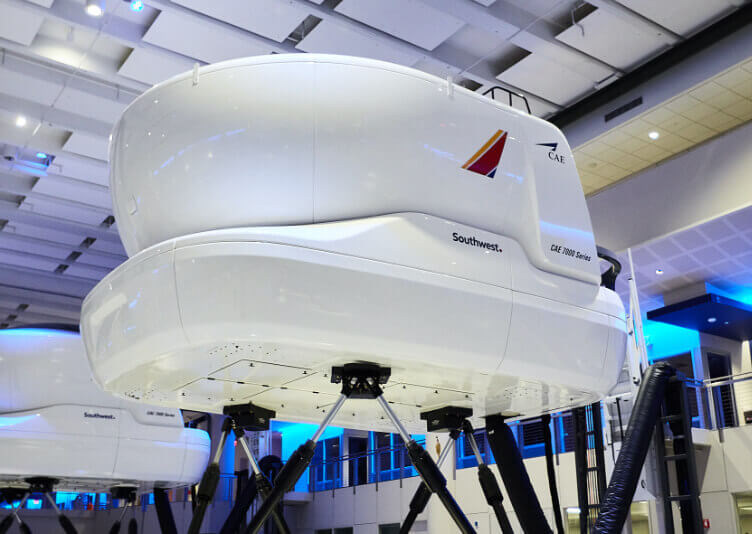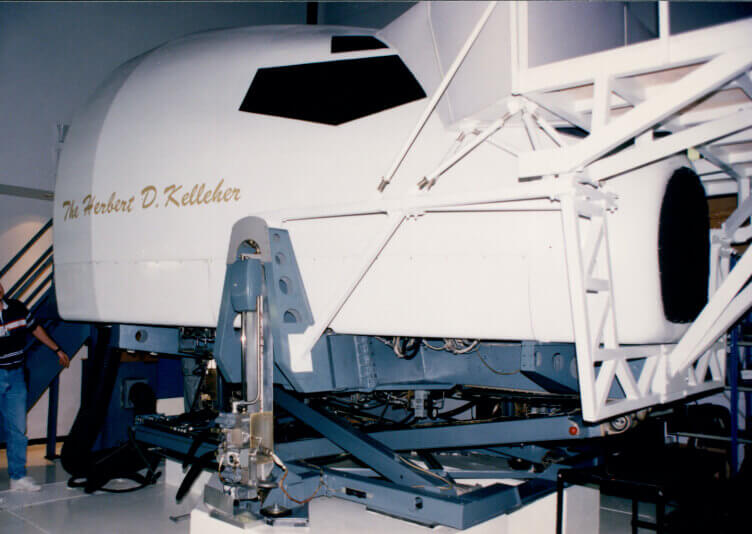
A beaming Herb Kelleher leaves his handprint in the cornerstone of the Flight Training Center near Love Field in August 1985.
LEADing the Way and the Flight Training Center
In 1986, when Southwest Airlines Founder Herb Kelleher took a spin in a flight simulator, he showed that investing in top-quality training was a priority. And many times since that initial test drive by Herb in the Flight Training Center next to Love Field, other Southwest Leaders have taken a turn in the “sim” and re-affirmed the Company’s commitment to excellent Pilot training.
When the Flight Training Center opened in August 1986, it represented state-of-the-art technology. The centerpiece? The multimillion dollar Boeing 737/300-200 simulator sim used a six-axis hydraulic system to duplicate the magic of flight and mimic the motions and responsiveness of the Boeing planes in the Southwest fleet.
In today’s digital world, it can be hard to imagine how those first analog simulators broke new ground. They were powered by fairly basic computer systems and old-school hydraulic fluid. They were loud and sometimes messy. But they were the first of their kind, and those early investments set Southwest Pilots up to lead the pack on flight recovery training.

The Flight Training Center adjacent to Love Field was not only state-of-the-art for the time, but well-equipped with the most important thing for successful Pilots: Southwest’s legendary Culture.
The Flight Training Center of the late 1980s eventually led to today’s expanded LEAD (Leadership Education Aircrew Development) Center, a facility covering 100,000 square feet, and featuring the latest generation of simulators. The simulator of today has sleeker lines than those early ones—“more like a yacht,” says former Director of Southwest’s Flight Training Center Joe Marott, who had served in that role when the original Center opened in 1986 and who oversaw the move into the much larger LEAD Center in late 2017.
From the start, the Company’s rigorous standards meant that most newly hired Southwest Pilots came already having full qualifications to be a Captain. Today, all 9,000-plus Southwest’s Pilots, including any new Pilots hired, go through the LEAD Center for initial training before starting the job and return every year for recurrent training.

A modern simulator, suspended in mid-air, can simulate the motion of a 737.
Walking through the LEAD Center today, a noticeable difference from the original center is the quiet. In its vastness—it’s the size of a football field—18 simulators in full operation produce very little sound. In fact, it’s so quiet that a Pilot can whisper to another and be easily heard.
Besides the sleek modern simulators, Southwest’s technology for training and certifying Pilots has also changed dramatically since those early days. The instructors in 1986 used elemental classroom tools: carousels of 35-millimeter slides and whiteboards. Today, computer-based training utilizes internet resources and allows for flexible instruction design.
Southwest’s secret weapon in training, though, has always been its unique cadre of experienced instructors, including the Southwest veterans lovingly known as “our space cowboys.” Along with younger instructors from a range of flying backgrounds, they bring an unmatched depth of hands-on experience and intimate knowledge of advanced-handling characteristics of the aircraft.
The original Flight Training Center was one of the first places Captain Bob Waltz visited when he started as Chief Pilot for Network Operations Control after retiring from the Air Force in 2000. Even then, he was amazed to find a commercial airline training center that was so well-equipped and compared favorably with the simulator capacity of the U.S. military’s flight training.But Bob, now Vice President Flight Operations, also found something else. “I think what I loved,” he said, was “the immediate immersion in Southwest Culture in the training center.”

Herb Kelleher didn’t just get a 737 named after him, he also got this training simulator named in his honor.
Today Southwest’s training program remains one of the most robust in the industry, fortified by real-world experience. Its Advanced Qualification Program includes training scenarios that are based on actual events, gaps, and opportunities documented the previous year.
“It’s like the flu shot,” Bob explains, where each year’s shot is updated based on sampling from the year before. Using the latest data from the fleet, the Team creates a scenario-driven model of training that brings forward the experience of Pilots across the Company.
That real-world experience suits the Warrior Spirit, feedback shows. Bob’s Team receives dozens of emails and letters from Crews with messages such as this one: “When I got a stick shaker up at altitude due to a mountain wave turbulence, I knew exactly what was going on. I knew exactly how to handle it, and it took me back to that training we did in the simulator. Thank you!”
Southwest Airlines is famous for delivering value to its Customers, Joe says, but it spares no expense in training. Southwest invests, he says, in “the tools necessary to train the best and most confident Pilot that we can.”
Bottom line? “We’ve gone from a very basic, simple approach in training Pilots to a much more sophisticated, data-driven, more scientific” approach,” Joe says.
